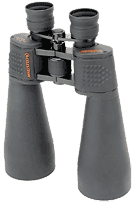|
2
|
Moon 0.8° from the Pleiades at 21h UT (41° from Sun, morning sky).
|
|
3
|
Mercury near Beehive cluster at 13h UT (evening sky).
|
|
4
|
Venus very near Beehive cluster at 4h UT (evening sky).
|
|
4
|
Deep Impact probe collides with Comet Tempel 1 at about 6h UT, an event likely to greatly increase the brightness of the comet (normally mag. 10). How bright and for how long remains to be seen. Skywatchers can use the sky map to locate the comet throughout the month.
|
|
6
|
New Moon at 12:02 UT. Beginning of lunation 1021.
|
|
7
|
Mercury near Venus at 8h UT. Mags. +0.4 and -3.9.
|
|
8
|
Moon at apogee (furthest from Earth) at 18h UT (distance 406,363 km; angular size 29.4').
|
|
8
|
Moon near Venus and Mercury at 22h UT (26° from Sun, evening sky). All 3 objects are within a circle of diameter 5°.
|
|
9
|
Mercury at greatest elongation, 26° east from the Sun (evening sky) at 3h UT. Mercury (mag. +0.5) visible low in the west (below Venus).
|
|
13
|
Moon very near Jupiter at 18h UT (evening sky). Occultation visible from Antarctica and southern South America (daytime). Jupiter at mag. -1.9.
|
|
14
|
First Quarter Moon at 15:20 UT.
|
|
14
|
Moon near Spica at 19h UT (evening sky).
|
|
18
|
Moon very near Antares at 4h UT (evening sky). Occultation visible across southern USA, Central America, and northernmost South America.
|
|
21
|
Full Moon at 11:00 UT. The full Moon of July is called the "Thunder Moon" or "Hay Moon".
|
|
21
|
Moon at perigee (closest to Earth) at 20h UT (distance 357,159 km; size 33.5').
|
|
22
|
Venus, 1.1° from Regulus at 23h UT (30° from Sun, evening sky). Mags. -3.9 and +0.0.
|
|
23
|
Saturn at conjunction with the Sun at 16h UT. The ringed planet passes into the morning sky. Not visible.
|
|
27
|
Moon near Mars at 17h UT (95° from Sun, morning sky).
|
|
28
|
Last Quarter Moon at 3:19 UT.
|
|
|
MORNING PLANETS: Mars (mag. -0.1 to -0.5) rises about one hour after midnight. Surface features may be visible in a medium-sized telescope.
|
|
|
EVENING PLANETS: Mercury (mag. +0.1 to +0.5) in the west-northwest near Venus during the first week of July, before it descends towards the horizon. Saturn (+0.2) passes into the morning sky. Jupiter (-2.0) bright in the southwest. Venus (-3.9) low in the west-northwest.
|
|
All times Universal Time (UT). (USA Eastern Summer Time = UT - 4 hours)
|


